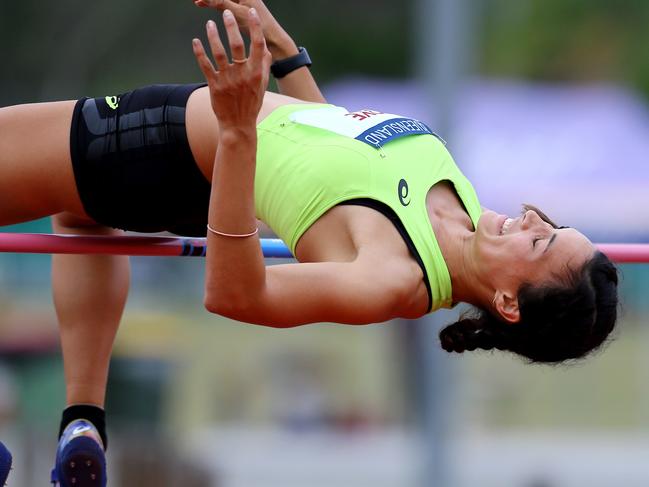Former Olympian Glynis Nunn talks track and field participation in this week’s Junior Sport column
The Gold Coast Academy of Sport is doing its bit to get school-aged children involved in track and field, as former Olympian Glynis Nunn discusses in this week’s Junior Sport column.
Local sport
Don't miss out on the headlines from Local sport. Followed categories will be added to My News.
THIS year track and field is starting in the school system much earlier.
For secondary schools the Regional Championships are being held at the end of July while the State Championships for primary school will be held in August.
These are normally conducted in September and October.
I have received a few calls from schools asking about the dimensions of high jump bags because there are a lot of queries concerning the safety of high jumping.
I have also heard among athletes that their school is not holding high jump anymore as part of their school carnival.
I wonder where safety measures are heading.
Gymnastics is a rarity now at school because of the safety concerns.
There is so much literature about obesity and inactivity yet we are taking activity away from inquisitive youngsters.
How many young people cannot perform a forward roll?
It is declining.

The Gold Coast Academy of Sport will be conducting some athletic clinics during the upcoming holidays in early July.
As high jump is not taught at all schools, we thought it appropriate to do a “Kangaroo clinic” on July 1 and 2 where we will cover high jump, long jump and triple jump.
On July 3 and 4 we will conduct a speed clinic covering sprints and starts to help improve sprinting technique.
We hope that this will help to improve skills for upcoming carnivals.
A little about high jumping.
Although the basic teaching methods of the flop high jump are quite simple, it is important that youngsters learn the basic takeoff for scissors before moving onto the flop.
If this does not happen, the initial learning stages can make it difficult to improve.
Successful learning of an effective high jump technique depends largely on basic preparation in the initial stages.
The first 12-18 months of learning needs to include the development of a rational running technique, strengthening of the support and movement structure and improvement in co-ordination.
There needs to be a definite sequence of teaching and athletes and parents need to understand that young athletes need time to develop a confident approach and jump.
A coach is responsible for the beginner to develop a correct image and “feel” of the technique.
There needs to be a good understanding of effective takeoff, bar clearance and landing techniques, combined with an efficient co-ordination of the run-up and takeoff.
It is great for the young athlete to learn by seeing slow motion films and videos, photos, drawings and videos of their own performances.
It is also important for the coach to see what method of learning is best for the athlete as some learn best by talking while others learn best by seeing and feeling.
Some simple guides to the process of learning are:
■ The athlete needs to learn from what side of the mats they take off from;
■ The athlete needs to learn to co-ordinate arms with legs during approach and takeoff;
■ Learn how to develop a rolling heel-to-toe takeoff action – progress from walking to gentle skips to high skips;
■ Take off from a few steps to land in a sitting position. (Some athletes are frightened to clear the bar backwards and land on the back and shoulders, so there are drills to help them “feel” this);
■ Perform good scissor clearance from straight run-up. Need to be upright and not trying to clear the bar before taking off. Eyes play an important part here;
■ Perform run-up from a curved run-up (no jump). This can then be performed landing in a sitting position as mentioned before;
■ Work from a short run-up of 3–5 strides to seven strides as the athlete improves and understands the need for the curve.
The above guidelines are by no means endless and the only progressions that should be used. In explaining these sequences of learning, I am not prescribing athletes under the age of 13 to do the flop.
What I would like to stress is that all athletes who are going to attempt to do the “Fosbury flop” should have a strong scissor takeoff and an understanding of a basic flop technique.
It is essential that athletes join the individual part of the high jump into a total action.
This is a progression in all disciplines of track and field.
The Academy is pleased to be able to offer the two clinics in the upcoming holidays.
Anyone interested in learning more about the clinics please contact programs@goldsport.com.au.


